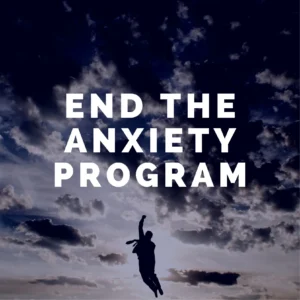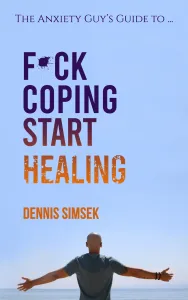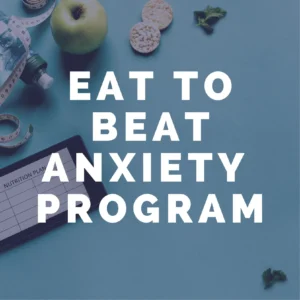
Table of Contents
Why I can’t heal while I stay frantic
I believe this with everything in me: you cannot heal health anxiety if you keep reacting in a frantic way to symptoms, thoughts, or anything in the outside world. For years I lived in that frantic place. My energy went to chasing every sensation, checking every thought, and searching for answers in the next new thing. Healing started the day I made a decision to shift my energy toward ease instead of panic. That decision kicked off a different way of living, and it can do the same for you.
The choice that changes everything
It really does begin with a choice. I chose, in small everyday moments, to put more time and attention behind peace. When I do that, my body stops being on constant alert. When I don’t, the old patterns pull me back into survival mode. Healing isn’t magic; it runs deeper than techniques. It’s about how I respond when a symptom shows up, or when a thought tries to drag me into the future or the past.
How the fear of normal shows up
When I first talked about the fear of normal on Instagram and YouTube, I was surprised by how many people related. Normal sounds like the goal, but many of us secretly fear it. Why? Because clarity and ease feel unfamiliar. Over time I realized I had linked calm with danger without even knowing it. That connection is built from experiences, from what we watched our parents do, and from a world that rewards frantic activity.
When calm feels like a trap
I would see people plateau in recovery not because a technique failed, but because they feared too much change. Less symptoms, more clarity, a different identity — those shifts felt risky. My brain had learned that staying busy and anxious was safer, even though it caused suffering. So calm felt like a trap, not a relief.
Why I fear the lessening of symptoms
I know this sounds odd to say out loud, but I remember being scared when symptoms eased. The mind told me: if it’s quiet now, something worse must be coming. That old survival story kept me looping back to checking and doing. Once I learned to notice that voice and let it pass, the quiet moments became gifts rather than alarms.
When past stories run the present
We carry belief systems from the past. Maybe the adults we watched were always stressed, always in crisis. If that’s what normal looked like growing up, then calm can feel wrong. I had to unlearn those patterns. I had to practice the idea that quietness does not equal danger.
When fear keeps us stuck
Fear shows up in so many small ways. It shows up as a need to act, to fix, to control. It shows up as restlessness, as the urge to research, as reaching for coffee because I think I need the buzz to get through the day. I used to watch other people rush from place to place and wonder if I should be doing the same. Now, I purposely slow down. I choose tea. I let the tree outside the cafe be my teacher. Those small acts of non-reaction shifted my nervous system.
Small steps to meet quietness without fear
I started in tiny doses. I gave myself five seconds at first, then thirty, to sit with a moment of quiet without doing anything. The shower became a practice space: I let the water hit my body and noticed when thoughts moved away from symptoms. I closed my eyes for small pockets of time and practiced not responding. Each small moment of stillness taught me that I could be safe in calm.
How I practice stillness in daily life
- I find a quiet moment and notice my breath.
- I let a thought come and go without acting on it.
- I sit and watch a tree move instead of scrolling.
These micro-practices taught me that stillness is not mystical. It’s normal life experienced without reactivity.
A simple exercise to try now
When a symptom appears, I pause. I name the sensation without trying to change it. I breathe. I remind myself: I do not have to act. That pause weakens the automatic reaction and gives space for quietness to grow.
Small doses of curiosity and quietness
Be curious with yourself. Allow small experiments: try five seconds of quiet, then ten, then a minute. Notice how your body reacts. If old panic arises, treat it like a passing weather pattern. I promise you, over time those minutes add up. Curiosity helps me sit with things I used to avoid. The more I allow quiet, the less my anxiety runs the show.
The lesson I wish everyone would hear
Whether you are at the start of this healing path or further along, the one lesson I hope you take away is this: practice meeting stillness in small ways. Let quietness become familiar. When you do, you are taking another step up the ladder of recovery you deserve. You are more than your anxiety, and you have the strength to change how you live each day.
If you want a guided path
If you want more structure, I created a 12-week approach at anxietyguyprograms.com to walk people through daily steps for health anxiety recovery. I built that program from everything I learned the hard way so you don’t have to figure it all out by yourself.
Final words from me
I love you all and I believe in your ability to heal. Let quietness in small doses show you it’s safe. Let ease replace franticness, one practical choice at a time. If this episode helped you, please leave a positive review on Apple Podcasts. Thank you for joining me. I’ll see you next time.
Citations
- Curtiss, J. E., Levine, D. S., Ander, I., & Baker, A. W. (2021). Cognitive-Behavioral Treatments for Anxiety and Stress-Related Disorders. Focus, 19(2), 184–189.
- Hofmann, S. G., Sawyer, A. T., Witt, A. A., & Oh, D. (2010). The effect of mindfulness-based therapy on anxiety and depression: A meta-analytic review. Journal of Consulting and Clinical Psychology, 78(2), 169–183.
- Surawy, C., McManus, F., Muse, K., & Williams, J. M. G. (2014). Mindfulness-Based Cognitive Therapy (MBCT) for Health Anxiety (Hypochondriasis): Rationale, Implementation and Case Illustration. Mindfulness, 6(2), 382–392.
- Calderone, A., Latella, D., Impellizzeri, F., de Pasquale, P., Famà, F., Quartarone, A., & Calabrò, R. S. (2024). Neurobiological Changes Induced by Mindfulness and Meditation: A Systematic Review. Biomedicines, 12(11), 2613.
- Keng, S.-L., Smoski, M. J., & Robins, C. J. (2011). Effects of mindfulness on psychological health: A review of empirical studies. Clinical Psychology Review, 31(6), 1041–1056.
- Health. (2020, June 22). Health Anxiety: What It is and How to Beat It. Adaa.org.
- Corliss, J. (2014, January 8). Mindfulness meditation may ease anxiety, mental stress – Harvard Health. Harvard Health.
- Meltem Yavuz Sercekman. (2024). Exploring the sustained impact of the Mindfulness-Based Stress Reduction program: a thematic analysis. Frontiers in Psychology, 15.
- The power of stillness to reduce stress and slow ageing. (2023, June 22). Horizon Magazine.
- Howard, L. (2023, May 10). Anxiety disorders will affect nearly 1 in 3 adults: Here’s what you need to know. News; UC Davis Health.




